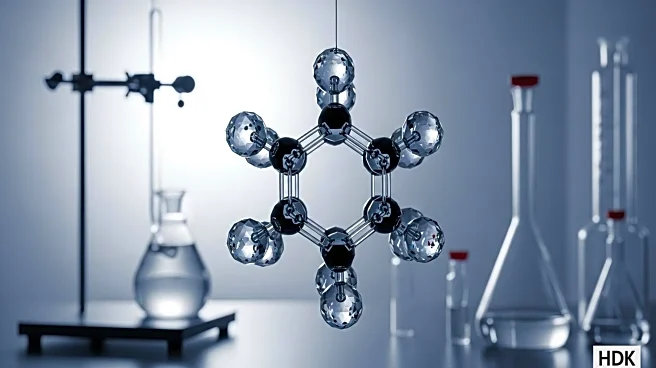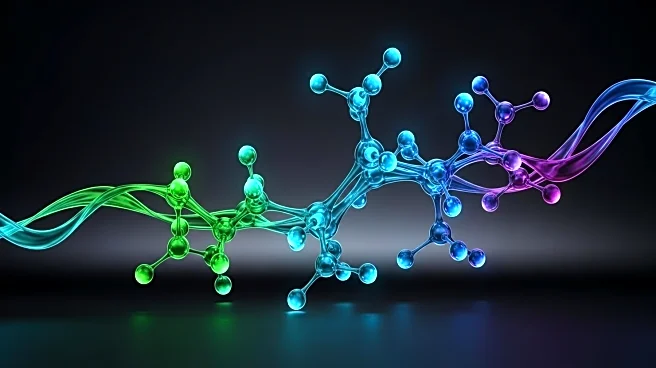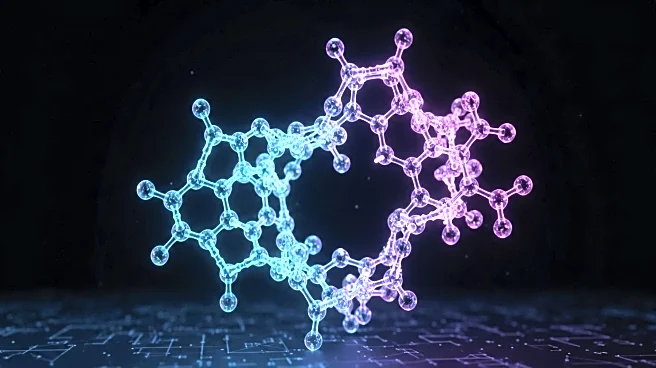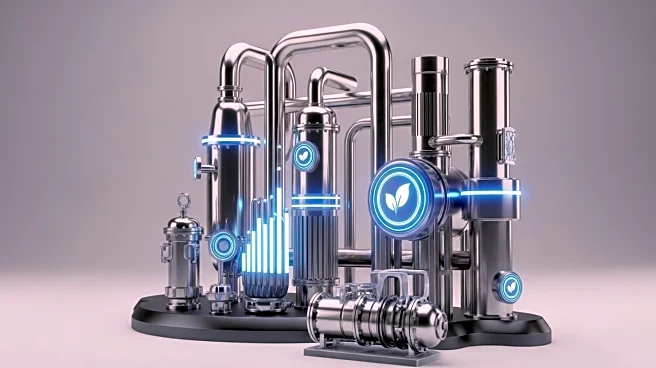What is the story about?
What's Happening?
The Ferric Hydroxide Market is experiencing significant growth due to its applications in water treatment, wastewater management, and industrial purification processes. According to Persistence Market Research, the market is projected to reach new heights by 2032, driven by increasing awareness of clean water standards, rapid industrialization, and growing environmental regulations globally. Ferric hydroxide is valued for its excellent adsorption properties and stability, making it a vital compound in environmental remediation, chemical synthesis, and manufacturing industries. The compound is particularly effective in removing contaminants such as arsenic, heavy metals, and phosphates from water, which has led to its widespread adoption in municipal water treatment plants, industrial effluent treatment, and groundwater remediation projects.
Why It's Important?
The expansion of the ferric hydroxide market is crucial for addressing global water scarcity and pollution challenges. As industries such as pharmaceuticals, textiles, and chemicals increasingly adopt ferric hydroxide-based solutions to meet discharge regulations, the compound's role in reducing environmental footprints becomes more significant. Its use in industrial wastewater management systems ensures compliance with environmental safety norms, providing a competitive advantage over other coagulants and adsorbents. Additionally, ferric hydroxide's application in pigment manufacturing supports the growth of the construction and automotive industries, further boosting demand. The compound's eco-friendly properties align with global sustainability goals, making it a key player in environmental protection efforts.
What's Next?
The future of the ferric hydroxide market is expected to be shaped by technological advancements and material innovation. Manufacturers are investing in research and development to create high-performance variants with enhanced adsorption capacities and longer lifespans. The integration of ferric hydroxide in composite filtration systems and nanostructured materials is becoming a key trend, improving efficiency and reducing operational costs. As smart water management technologies rise, ferric hydroxide is likely to be integrated with sensor-based filtration and automated monitoring systems, enhancing large-scale water treatment operations. These developments will open avenues for digital transformation in the chemical treatment industry.
Beyond the Headlines
Despite its potential, the ferric hydroxide market faces challenges such as high production costs and competition from alternative materials like aluminum-based coagulants. However, emerging economies present substantial growth opportunities due to rapid industrial infrastructure expansion and government-backed pollution control programs. Continuous innovation in nanostructured ferric hydroxide and composite adsorbents is expected to enhance performance, providing lucrative opportunities for market players. The focus on circular economy practices is prompting companies to recycle and reuse ferric hydroxide materials, ensuring sustainable manufacturing and long-term market growth.
AI Generated Content
Do you find this article useful?













